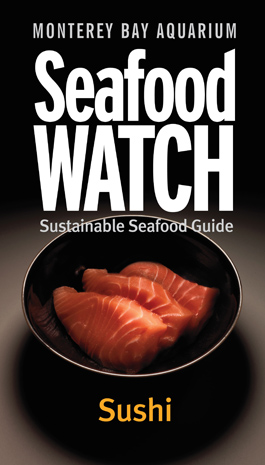home | metro silicon valley index | features | silicon valley | feature story

Watch This
The Seafood Watch Sushi guide helps raw fishionados do the right thing
By Traci Hukill
Ken Peterson, spokesman for the Monterey Bay Aquarium, says stories like that are encouraging. "That tells me we've touched a chord," he says. In October the aquarium's Seafood Watch program launched its Sushi guide as a companion to its well-known Seafood Watch pocket guide. Like the original, it lists "Best Choices," "Good Alternatives" and "Avoid" categories. The main difference is it uses the Japanese terminology—key for sushi fans looking to lessen the impact of their choices.
"People who eat and like sushi wouldn't always find the things on the menu listed under names we were providing on the other pocket guides," Peterson says. "'Unagi' or 'ahi' or any of the other traditional Japanese names don't readily translate to 'bluefin tuna' or 'eel.'"
The good news is we can all get a little bit more righteous with our chopsticks. The bad news is we'll have to do it without unagi (freshwater eel), most maguro (all bluefin and most bigeye and yellowfin), most hamachi (yellowtail tuna) and all imported ebi (shrimp). And, of course, all farmed sake (salmon).
It's still OK to eat spot prawns, U.S.-produced shrimp and hamachi, pole-caught bigeye and yellowfin tuna and wild Washington and Alaska salmon.
There's another thing: abiding by the Seafood Watch Sushi guide means relying on restaurants to educate servers about the origins of the seafood. Peterson admits that's not so much the case right now.
"It's always a bit of an uphill climb at the start," he says. "Particularly with sushi, where sustainability isn't necessarily part of the culture of sushi right now. It's the artistry, the freshness, but not necessarily thinking about what is the source of it."
He adds that Casson Trenor's Tataki is an excellent example of a sushi restaurant that has found tasty, good-textured substitutes for fish on the "Avoid" list. "There's another in Portland and one in Seattle," he says. "I think we'll see more of these."
The Seafood Watch Sushi guide is available online at www.montereybayaquarium.org.
Send a letter to the editor about this story.
|
|
|
|
|
|